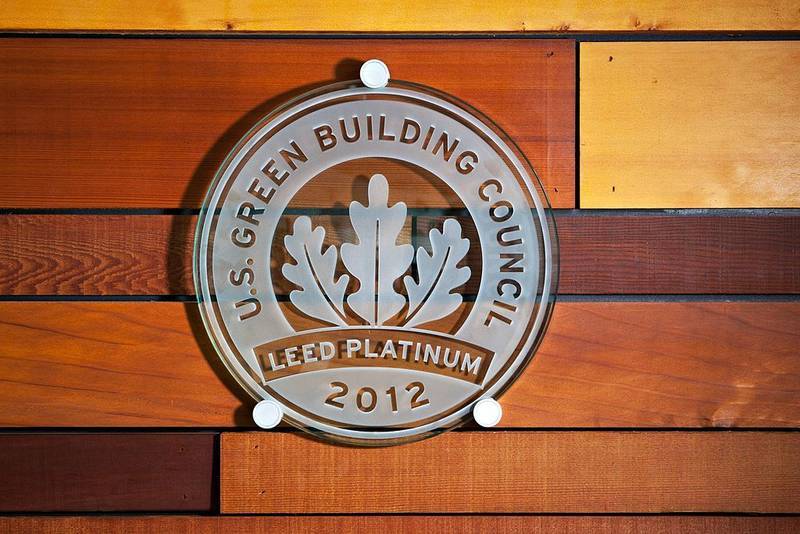Leadership in Energy and Environmental Design, commonly known as LEED, is a third-party certification program used in over 30 countries around the world to rate high-performance buildings, homes and neighbourhoods.
Certifying a LEED building requires following a specific rating system, which is administered by LEED professionals with specific credentials. This article examines the basics of taking a LEED exam and gaining LEED professional credentials.
LEED Canada
The Green Building Certification Institute (GBCI) administers LEED professional credentials for the entire world. GBCI has accreditation for Personnel Certification with the American National Standards Institute (ANSI). The GBCI was founded with the support of the US Green Building Council (USGBC) “to provide independent oversight of professional credentialing.” It’s confusing but even though the GBCI is the one who administers LEED credentials, to get your LEED credentials you actually visit this page of the USGBC’s website.
In Canada, the Canada Green Building Council (CaGBC) provides a preparation course to aspiring LEED professionals aiming for the LEED Green Associate credential. It also offers official continuing education courses and events for those looking to maintain their LEED professional credentials. You can get more information about CaGBC’s learning opportunities here.
Who Administers LEED Exams?
The GBCI, in association with the USGBC, provides third-party administration and development. This model gives the assurance that LEED professional credentials are objectively and fairly managed, ensuring that the credentials, exams and eligibility requirements are universal and will stand up to international requirements.
The USGBC, the organization that developed LEED, maintains the information on LEED credentials on its website while the GBCI actually administers the process. To register for a LEED exam visit this page.
LEED Exams

If you want to clearly and easily demonstrate your knowledge of LEED and green building and have an easier time finding jobs that specifically call for LEED credentials, it’s worth taking a LEED exam.
There are a few LEED professional credentials you can attain, depending on your needs. The credentials are tiered:
LEED Green Associate
This entry-level credential is the first step for architects, engineers, tradespeople and others in the green building industry who want to pursue further certification. This level of credential is also intended for those who do not specialize in technical fields, such as lawyers, real estate agents and educators.
This credential is attained by passing a 2-hour multiple choice exam. There are no eligibility requirements, but LEED strongly advises exam-writers to have some familiarity with green building, either through education and training, work or volunteer experiences.
The USGBC and CaGBC both offer prep courses, however, there are many other third-party resources out there to help you prepare for this exam. The USGBC has compiled a solid list of prep courses and study material here covering both official and third-party study material. The USGBC also offers a combined exam registration and study kit bundle, which you can access here. Or to go the free route, you can check out this free exam prep from GreenCE.
Gaining the LEED Green Associate credential signifies that you have basic knowledge of green construction, design and operations. If you have no technical experience working on a LEED project this is a great place to start. And if you don’t get fully involved in LEED projects then this credential could be all you need.
LEED AP
This next level of credential is for professionals like engineers and architects who need more advanced and specific knowledge of LEED and have hands-on experience working on a LEED project. The LEED AP credential offers 5 different specialties that denote expertise in particular LEED rating systems:
- LEED AP Building Design + Construction (LEED AP BD+C) – A credential that affirms practical knowledge in design and construction of green buildings for the residential, commercial, education and healthcare sectors.
- LEED AP Operations + Maintenance (LEED AP O+M) – This credential denotes knowledge of sustainable practices that improve the performance of existing buildings and reduce their environmental impact.
- LEED AP Interior Design + Construction (LEED AP ID+C) – A credential for those involved in construction, design and improvement of tenant spaces and commercial interiors.
- LEED AP Homes – A credential specifically for those wanting practical knowledge of the construction and design of green homes.
- LEED AP Neighbourhood Development (LEED AP ND) – This credential is for those who take part in the development, planning and design of sustainable neighbourhoods.
The exams are 2 hours each, in multiple choice format. Candidates must have their LEED Green Associate designation before attempting a LEED AP exam. It’s also strongly advised to have work experience with LEED prior to taking the exam.
The USGBC maintains a list of LEED AP study resources here.
LEED Fellow
This designation is for exceptional professionals in the green building industry. LEED Fellows are nominated by peers and selected according to their ability to meet evaluation criteria in 4 out of 5 specific fields of green building (technical proficiency (required), plus 3 of the following: education and mentoring, leadership, commitment and service and finally, advocacy).
To be eligible, candidates must currently hold their LEED AP credential, have at least 10 years professional work experience with LEED and must have held their AP credential for 8 cumulative years. Candidates undergo a rigorous application process as well as a portfolio review.
More information from the USGBC can be found here.
Maintaining Certification
Once receiving LEED credentials, LEED APs and LEED GAs need to maintain their certification by earning continuing education (CE) hours. GAs need 15 education hours and APs 30 hours every two years.
These hours can be earned through education, conference attendance, project experience, volunteer work or through credited authorship.
Feature image: Blanchethouse via Wikimedia Commons (Creative Commons BY-SA); Image 1: Pixabay


Hello, We are an Aboriginal & Woman owned business and certified with the Canadian Government along with the Canadian Council for Aboriginal Business. We are a brokerage (plastics, glass, metals, paper) recycler and wish to move into and offer consulting for LEED projects in Canada within First Nations along with consulting firms, etc. How can Regional-Recycling & Logistics Inc. join your organization and have this in our toolbox during presentations?
Hi Todd! Thanks for your question. I’m an editor here at Green Building Canada – I’ve sent a reply to the similar email you sent us, but please let me know if you have any questions! Best, Cindy
Hi ,
How can i get my house LEED certified ?
Thanks
Andy
You can contact Canada Green Building Council (CAGBC) as they are the organization in Canada that LEED certifies houses – https://www.cagbc.org/our-work/certification/leed/
I WAN T TO REGOETER LEED GREEN CERTIFICAT EXAM. WHAT SHOULD I DO?
You can contact GBCI for this. They’re the ones who administer LEED credentials – https://www.gbci.org/#leed
I’m an interior design and would like to get my LEED associate. Where can I find study materials to practice before the exam?
I’ve just updated the article with links to various study resources. Otherwise have a look at this page as it has quite a lot of exam prep options: https://www.usgbc.org/education/leed-exam-prep